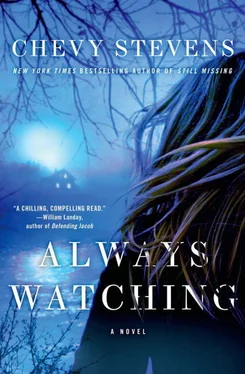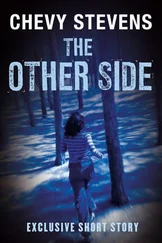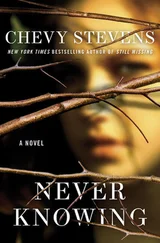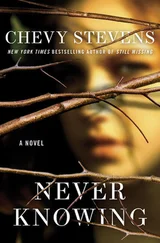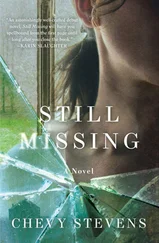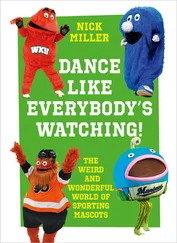The Web site described the friends you’d make, the greater understanding you’d gain of yourself and life as you learned about the all-embracing world, your newfound self-confidence and personal satisfaction. There was a lot of emphasis on being a steward of the land, that humans must take responsibility for the earth. I thought of Heather’s words the first time I met her. We take care of the earth.
They also gave back to the community and helped countries around the world. There were photos of people digging ditches, working in fields, building structures. There was a donation button, and I wondered how much money was actually used to help these struggling countries.
I was impressed—and surprised—at how professional they’d become since the sixties, and what they’d grown into. They were obviously a sizable organization now, with centers in three countries, and probably very wealthy. They had elaborate online catalogues, opening with a letter from their director, Aaron Quinn.
I stared at his photo. Gone was the long hair and straggly beard. His hair was now snow-white, neatly trimmed, and so was his beard, but he was still an attractive man. He was wearing a dark turtleneck and smiled kindly at the camera, a wise expression in his eyes. He looked exactly like what he presented himself as: a director of a center devoted to self-awareness and spiritualism. But as I studied his face, I felt myself drawing back in my chair, wanting to put some space between us.
I read his opening letter, about how he’d formed the center because he believed it was more important than ever, with the current global-warming crisis, to awaken people to the earth’s plight. They commanded large fees for workshops and intensives, ranging from a weekend to a month—if you were accepted into the program. They would only take so many at a time. Members had to apply to stay on and live permanently at the commune. I wondered what that was evaluated on. I also wondered what had happened to Joseph. I tried to calculate his age, and if he was eighteen when I knew him, he’d be almost sixty now. Aaron, twenty-two, would be in his early sixties.
I looked again at Aaron’s photo, his tranquil smile making me suddenly angry when I thought about Heather in the hospital, her wrists bandaged, blaming herself for the loss of her child. I turned my computer off.
The next morning, I woke late and groggy. Though I had no appetite, I made myself eat a muffin on the way to the hospital, washing it down with a tea that I grabbed at the corner coffee shop. I was hoping to talk to one of my colleagues before my rounds. I’d decided it was probably better for Heather if she had a doctor who had no previous involvement with the commune, but I wanted to discuss it with someone first. As I headed down the hallway toward the unit, I ran into Michelle. She smiled and said, “Good morning, Dr. Lavoie.”
I smiled back. “Morning.”
She stopped and looked at my scarf. “I love that. What a pretty color.”
I glanced down at the lavender scarf. I’d been distracted that morning and barely remembered putting it on. “Thanks. I’ve had it forever.”
“You always dress so nice. Well, have a good day.”
“You too.”
She continued on her way, leaving me feeling lighter in spirit than when I’d first come through the doors. Michelle was a lovely person, always positive and complimentary. A few days earlier in the break room, I’d told her I was turning fifty-five this month. She’d paused with her mug halfway to her mouth, and said, “You’re kidding me. I thought we were around the same age.”
Michelle was probably only in her mid-forties. I laughed. “I wish.”
She said, “Well, you look amazing.”
“That’s very kind.” I know that I look young for my age—I’ve taken care of my skin and eat healthy, though I struggle with an addiction to popcorn and peanut M&Ms. I balance it out with bike rides and yoga. Since I stopped dyeing my hair in my forties, deciding that it was just too much trouble, I’d come to like the silver, which was now in all different shades, ranging from nearly snow-white around my face to almost black on the underside. I used to wear it in a short, choppy cut, but I’d been letting it grow, and it now fell just past my shoulders.
To work with my coloring, I wear clothes in shades of gray and steel blues. I favor a bohemian style—long skirts with boots, loose flowing slacks and tunics, chunky silver jewelry, wraps and scarves, which fits with my love of art and traveling. Sometimes I wonder if I was a gypsy in a former life. But there’s another part of me that just loves to be home. Paul used to say, as we bathed together and drank wine straight from the bottle, “You’re a complicated woman, Nadine. I’m looking forward to spending the rest of my life figuring you out.”
My heart panged, like it did every time my thoughts drifted to my husband, Paul, who’d passed away ten years ago from prostate cancer. I had the love of my life, but now my work and my patients were my relationship.
* * *
That morning, as I walked down the hallway, I was disappointed that I’d missed Maurice, another psychiatrist who worked in the unit. I’d wanted to talk about Heather with him, but he’d finished his rounds early. Still thinking about what to do, and considering other doctors, I almost bumped into Dr. Kevin Nasser as he stepped out of his office—as the staff psychologist, he had an office on the main ward.
Kevin reached out to steady me, his hand warm on my arm, then said, “Good morning, Nadine. How are you?”
Many people just give the standard greetings without any real meaning behind the words, but from the first moment I’d met Kevin, I got the feeling that when we exchanged pleasantries, he was genuinely interested in my answer.
“I’m well, thanks. Is Erick in today?”
“He’s off for the rest of the week.” My face must have revealed something because he said, “Can I help?”
“I just wanted to get a second opinion on something.” I looked down the hallway, toward the ward. I was going to have to make a decision about this soon.
“Step into my office.” He opened the door.
I hesitated, wondering if I should work this out myself, then, still unsure of how to handle the situation with Heather, walked through. I hadn’t been in his office before and it appeared that he’d tried to fix it up a little: a fern in the corner, a wall tapestry, which looked like it might be from the Middle East.
When Kevin caught the direction of my gaze, he said, “Patients should have something to look at other than my ugly mug.”
He was far from ugly. True, he wasn’t classically handsome, like Daniel Simeon, but he had an interesting face. His features were almost Lebanese-looking, his nose broad, his skin tanned, with deep-set dark eyes, the corners turning down with fine lines radiating out. I knew he was forty-five, but his hair was still inky black, not a trace of gray. He didn’t dress very formal and tended to wear dark denim jeans with a nice shirt and tie, and then a casual blazer. He also wore clear-rimmed glasses with black metal earpieces that suited him. I’d only spoken to him a few times but thought him friendly and intelligent.
He said, “So how are you finding working at the hospital?”
“I’m enjoying it. Everyone’s been very welcoming.”
“Well, if I can ever help in any way, you let me know.”
I smiled. “Thanks.”
He said, “So what did you need a second opinion on?”
“A patient, Heather Simeon, was admitted a couple of nights ago after an attempted suicide, and during our initial interview she revealed something that made me realize I might not be the best doctor for her. I’d like to refer her to someone else.” Though we need to keep the patients’ information confidential outside of the ward, the doctors can discuss them because we work as a team.
Читать дальше
